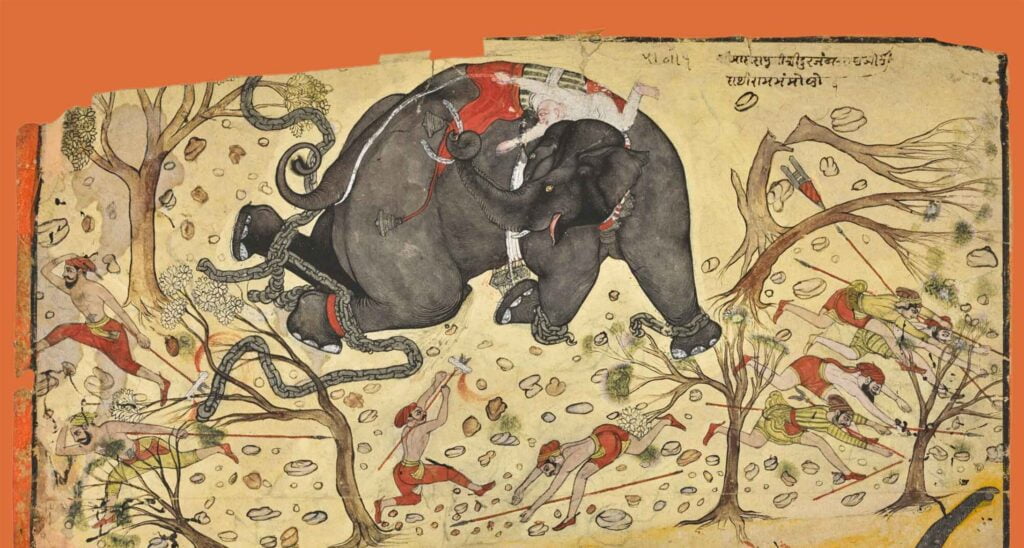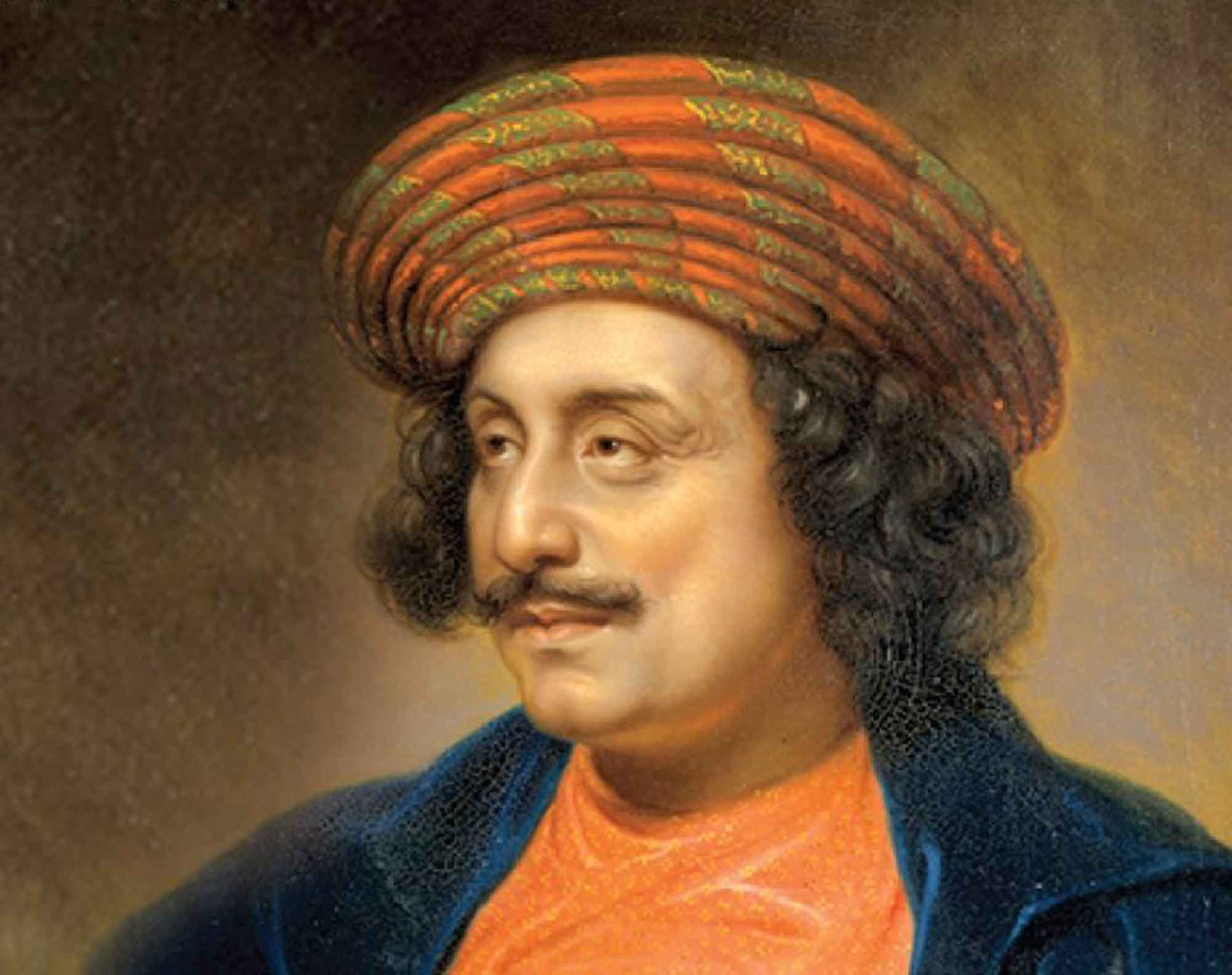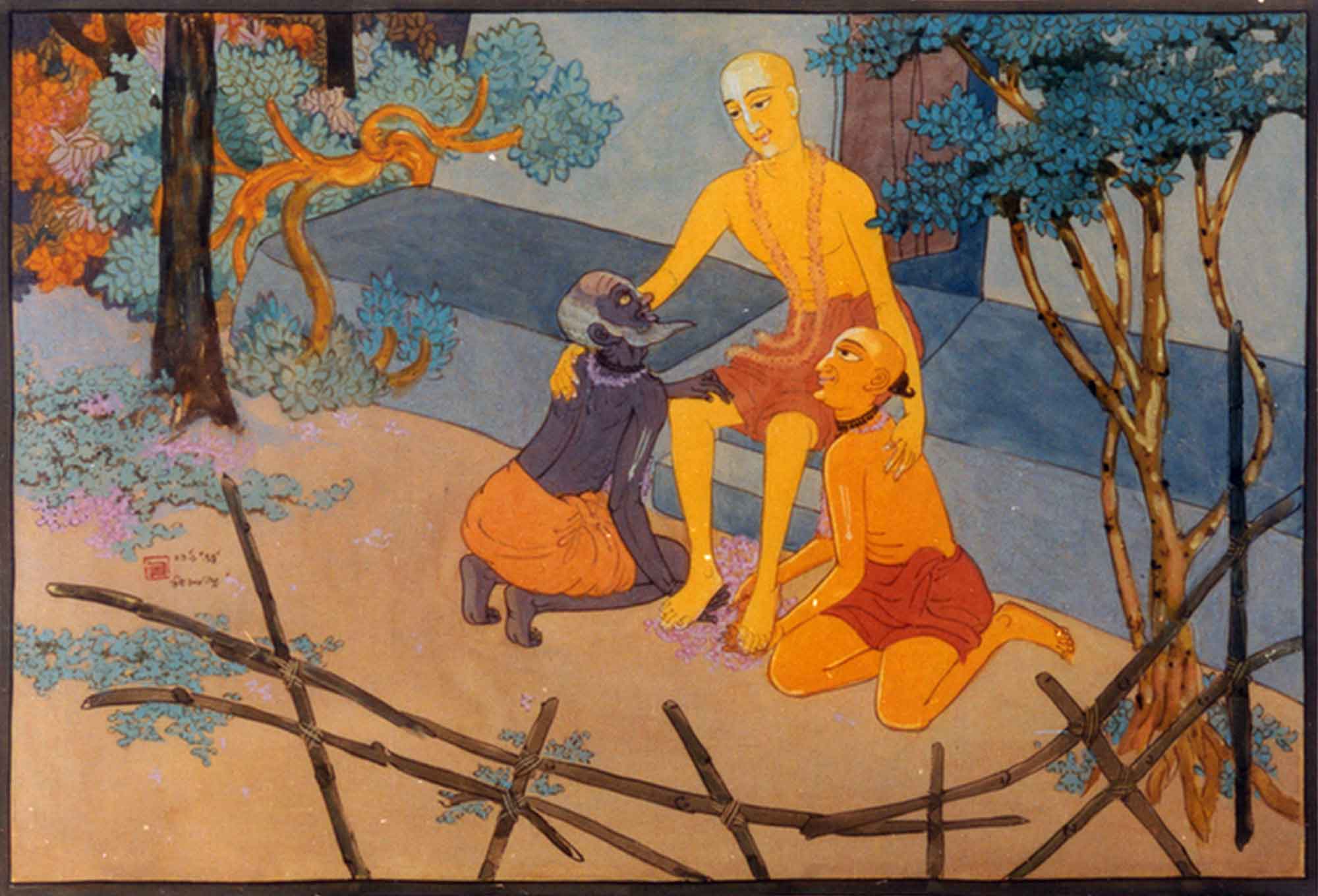Overview
In this Bengali article Dainya (Humility), Bhaktivinoda Ṭhākura stresses the need for humility in nāma-sādhana, the practice of chanting the Holy Name.
(translated by Gaudiya Vedanta Publications)
If a person sees such a sight with his own eyes, he will not perceive the humility of the Vaiṣṇava as hypocrisy. Rather, he will be able to observe the innermost bhāvas of the devotee, which have emerged from his heart with the great intensity of the passion of bhakti.
Humility as Taught by Mahaprabhu
Śrīman Mahāprabhu has drowned the world in the flood of His prema. He has flooded the desert-like hearts of hundreds and thousands of extremely wicked persons. He would sometimes laugh and sometimes cry, absorbed in the rapture of prema and constantly manifesting all sāttvika-bhāvas; and sometimes, being overwhelmed in the passion of bhakti, He would say:
na prema-gandho ‘sti darāpi me harau
krandāmi saubhāgya-bharaṁ prakāśitum
vaṁśī-vilāsy-ānana-lokanaṁ vinā
vibharmi yat prāṇa-pataṅgakān vṛthā
(C.c. Madhya 2.45)
“I do not have even a scent of prema for Śrī Kṛṣṇa. My crying for Him is simply a display of My fortune. If I would really have prema for Śrī Kṛṣṇa, then I would not be able to continue living in vain for even a moment longer without seeing the lotus face of Vaṁśī-vilāsī, He who performs pastimes by playing on His vaṁśī.” Aho! What an amazing humility; what an excellent bhāva!
Gaura-bhaktas, who are the most worshipable entities in the entire world, have displayed the zenith of humility. Their resolve to wear a particular type of clothes, their bowed-down faces and meek words constitute the highest ideal and the supreme teachings of dainya (humility).
Humility, Tolerance and so on are the Medium of Śrī Nāma-Sādhana
Patita-pāvana Śrī Gaurāṅga came to this world to preach śrī hari-nāma, and He has bestowed nāma to the people of the world. However, the first and foremost vehicle of that nāma-sādhana, cultivation of the holy name, is humility. He said in His own words:
tṛṇād api sunīcena taror iva sahiṣṇunā
amāṇinā mānadena kīrtanīyaḥ sadā hariḥ
(Śrī Sikṣaṣṭaka, verse 3)
“One who thinks himself lower than the grass, who is more tolerant than a tree, and who does not expect personal honour but is always prepared to give all respect to others, can very easily always chant the holy name of the Lord.”
A blade of grass always remains like a bowed head without any affliction, although it is trampled beneath everyone’s feet. Similarly, Vaiṣṇavas consider themselves to be the lowest of all, although they are in fact the best among all. Their lives are filled with humility, and they consider themselves worthy of being trampled beneath everyone’s feet. A tree renders service by giving its shade to others while tolerating heat and rain. It does not become distressed even upon giving shade to someone who has come to cut it with an axe. Similarly, Vaiṣṇavas who are completely devoted to nāma protect others, while tolerating unlimited pains inflicted upon them. They do not become averse to working for the welfare of others, despite receiving trouble for their efforts. They offer due respect to everyone in the world without expecting any honour for themselves. They alone have the adhikāra, qualification, for harināma-kīrtana.
Absence of Humility in the Modern Vaiṣṇavas Society
We are unfortunate that we no longer see such humility in the modern Vaiṣṇava society. Everyone is busy trying to display and glorify his own qualities: “I chant one lākh of names. Oh, my conduct is very pure, I am a great devotee.” Such egoistic statements have become the sole testimony of Vaiṣṇavism in present times. Nowadays, people no longer offer daṇḍavats naturally and with a simple heart. When two persons meet, they generally spend the whole time meant for offering daṇḍavat in thinking: “Should I first offer him daṇḍavats?” And eventually one greets the other simply by saying “Daṇḍavats.” Seeing all these inauspicious signs, it is feared that in the near future the influence of Kali will also enter into Vaiṣṇava society.
Instructions to chant Nāma by Completely Giving up Hypocrisy
What are we proud of? We are repeatedly being trapped in great illusions. At every moment we are degrading; at every step there is a dreadful calamity. Still, we remain proud. That personality who came to this world to preach nāma, and who could not satisfy Himself even by chanting harināma constantly, declared: “My misfortune is such that I do not have any attachment for nāma.” We, by contrast, think that simply by chanting one nāma once, we have developed extreme attachment for it. This is reason for great repentance, so why is it that we still maintain such evil-mindedness? Let us all come together. Completely giving up all types of hypocrisy, let us make our lives meaningful by experiencing the humility that is the hallmark of Vaiṣṇavism, the very behaviour of Śrī Gaurāṅga, and the ornament of a devotee’s life.













